About This Map
The mining town map markers may take a few seconds to load. Clicking the “Load Mines” button will load approximately 18MB of data.
Colored squares under the mines checkbox allow you to change the mine markers to your preferred color. The black/yellow square makes all mines with a primary commodity of gold yellow, and the rest black.
If you are using a big screen, be sure to try the “full screen” button found on the upper right part of the map.
For an explanation of how towns are categorized at WMH, see the article What is a Ghost Town? WMH Town Classifications Explained
This map is a simplified version of the Mines Explorer Pro map that is available to premium members.
Mining Towns By State
Mining Towns of the Frontier West
The western portion of the United States was mined sporadically and on a small scale as early as the late 1600’s by Spanish miners. However, it was not until the 1848 discovery of gold in California that a relentless pursuit of mineral wealth began in the western states.
The tens of thousands of miners that poured into California from all over the world established new communities throughout the state. Often called mining camps, they were usually established at the site of rich place gold deposits and sometimes contained thousands of inhabitants.
Many of these camps only lasted a few months until the gold ran out, then the miners packed up and moved on to the next big strike.
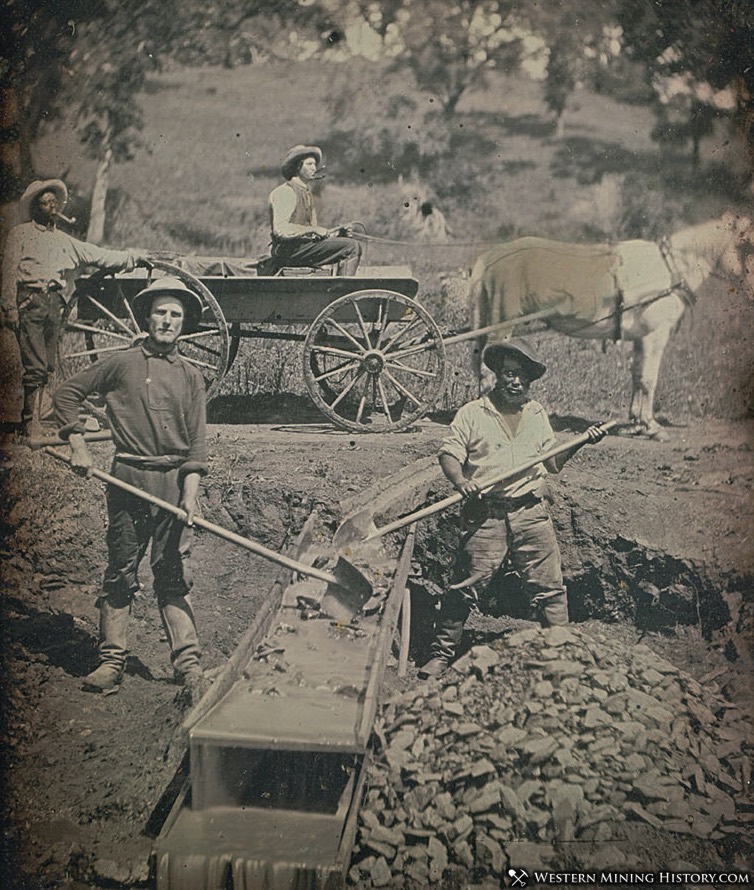
Other camps became strategic centers of supplies and transportation, and achieved a permanence that lasted for decades or even well over a century. Some of them became local seats of government, only to be stripped of the title after the town’s fortunes declined. Some remain the county seat of government today.
As the relatively easy to mine placer gold deposits ran out, lode mines (underground) were increasingly developed at large scale. The fabulous 1859 Comstock silver discoveries in Nevada ushered in the era of large scale, deep underground mining in the West, and the town of Virginia City grew into an important industrial city with a population of at least 25,000.
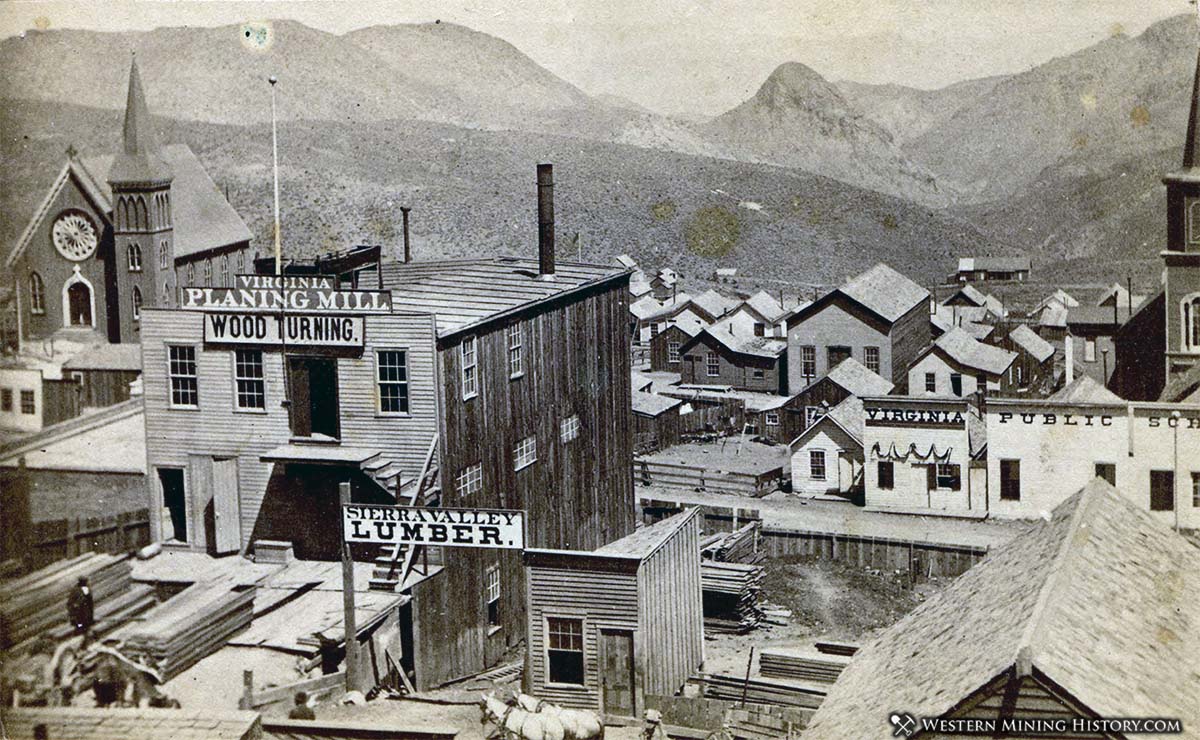
By the 1860’s prospectors were pushing into every corner of the vast mountainous west in search of riches. Mining towns sprang up in remote places throughout the western frontier.
Colorado experienced an enormous silver boom at Leadville in the 1870’s. That same decade, gold discoveries in the Black Hills of South Dakota would start a new gold, and the famous town of Deadwood was established among the mines there.
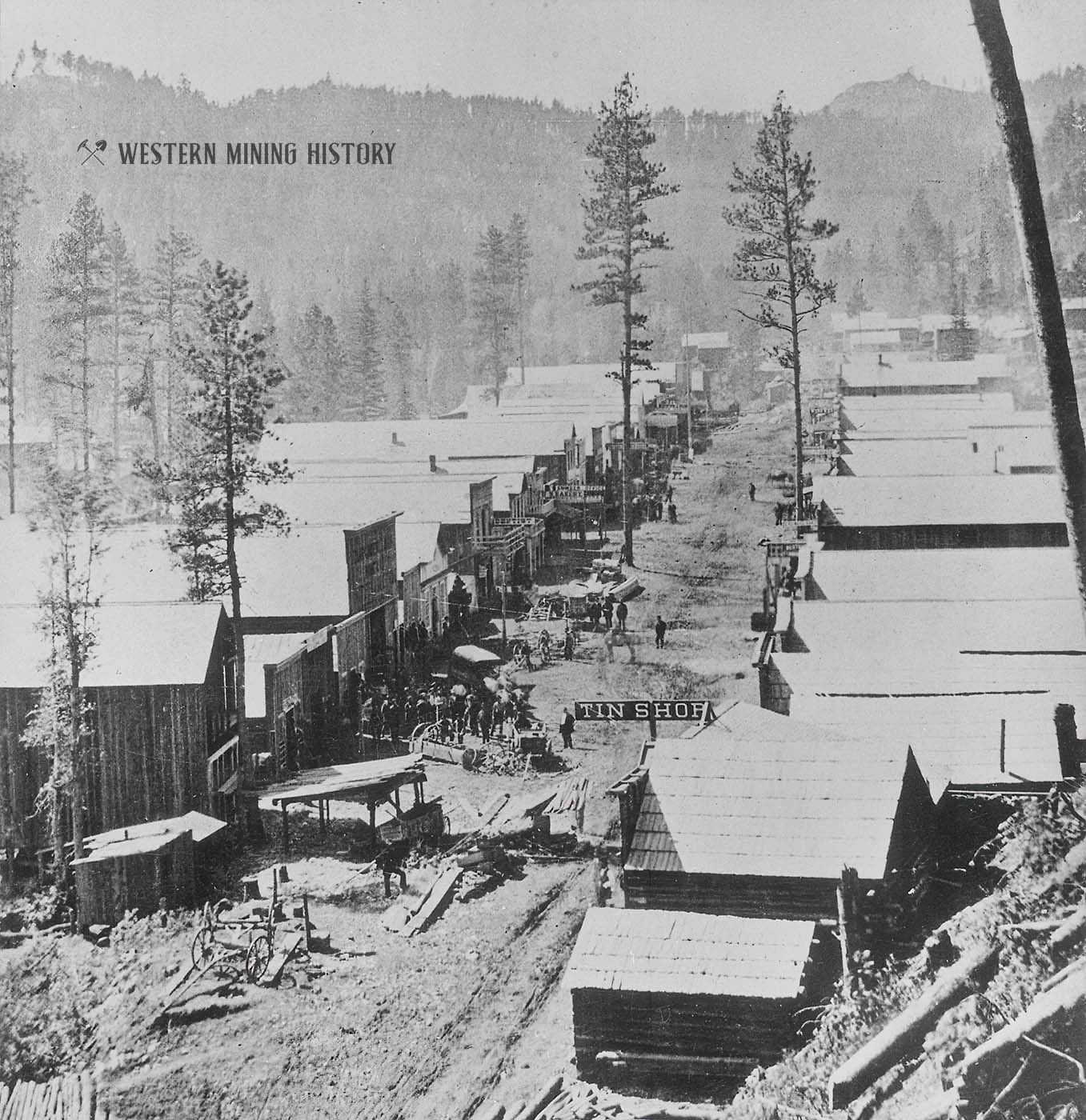
Some towns became fabulous cities virtually overnight, only to come crashing down a decade later as the mines played out. The most dramatic example of this boom and bust cycle was at Goldfield, Nevada, which became Nevada’s largest city within a few years of gold discoveries there, only to be burned to the ground and nearly abandoned by the 1920s.
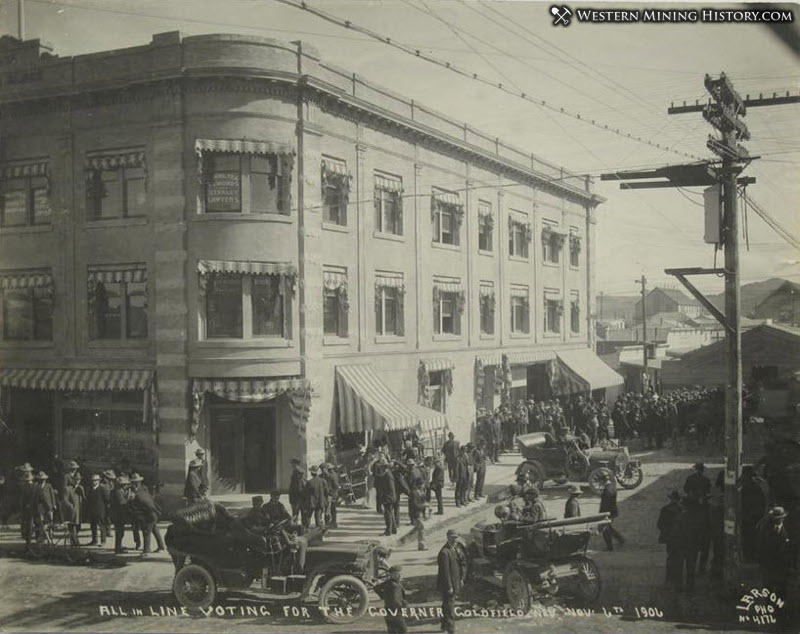
A similar story unfolded at nearby Rhyolite, now one of the nation’s most famous ghost towns.
As electrification started in the United States, copper became a valuable commodity and the great copper mining districts rose to prominence. The greatest of them was at Butte, Montana – at its peak around World War I, over 100,000 people lived in this iconic mining city.
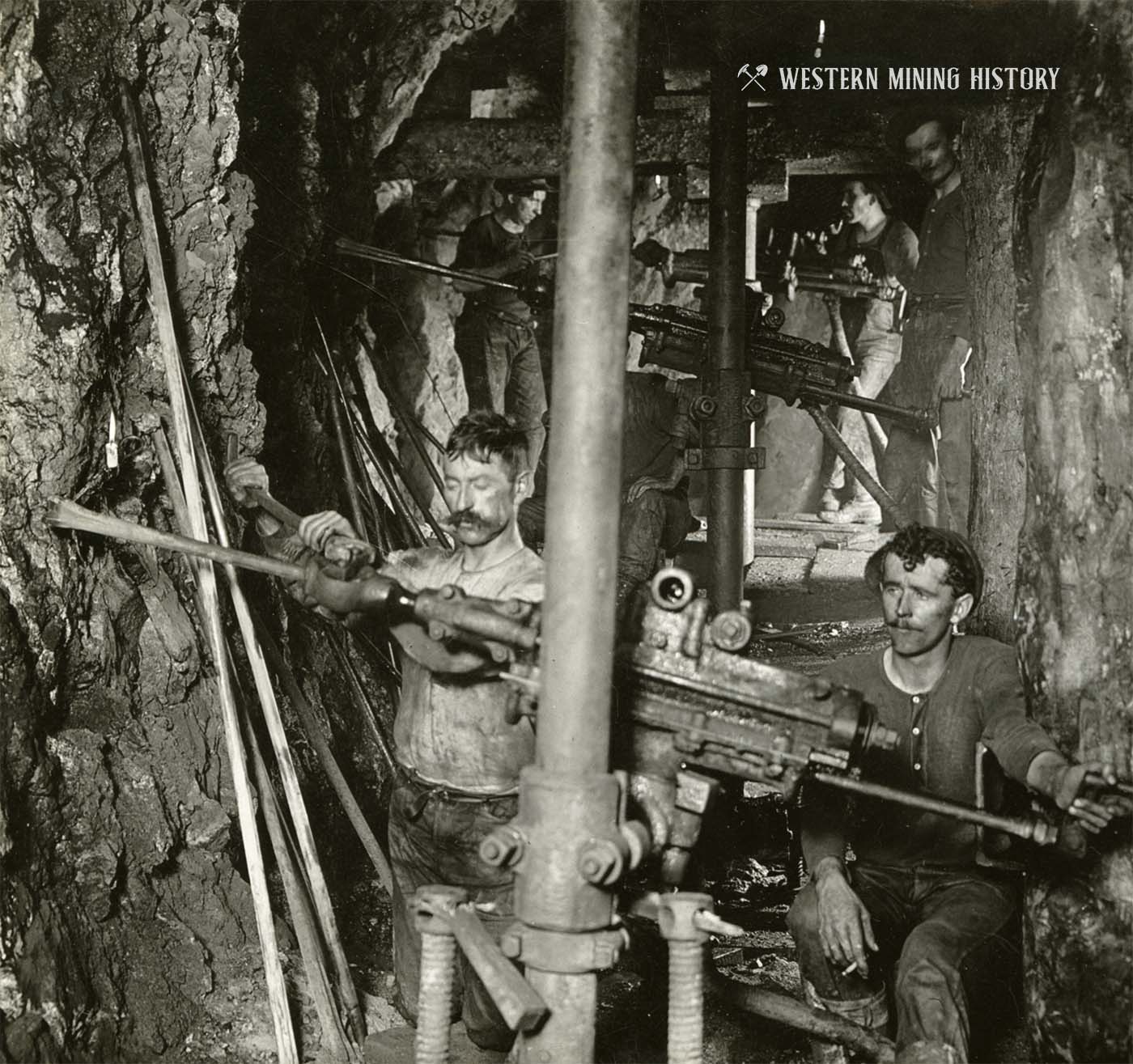
A late, major gold discovery was made at Cripple Creek in Colorado in the 1890’s. Cripple creek would become one of the world’s greatest mining districts, and the towns of Cripple Creek and Victor still stand today as stunning examples of western gold cities.
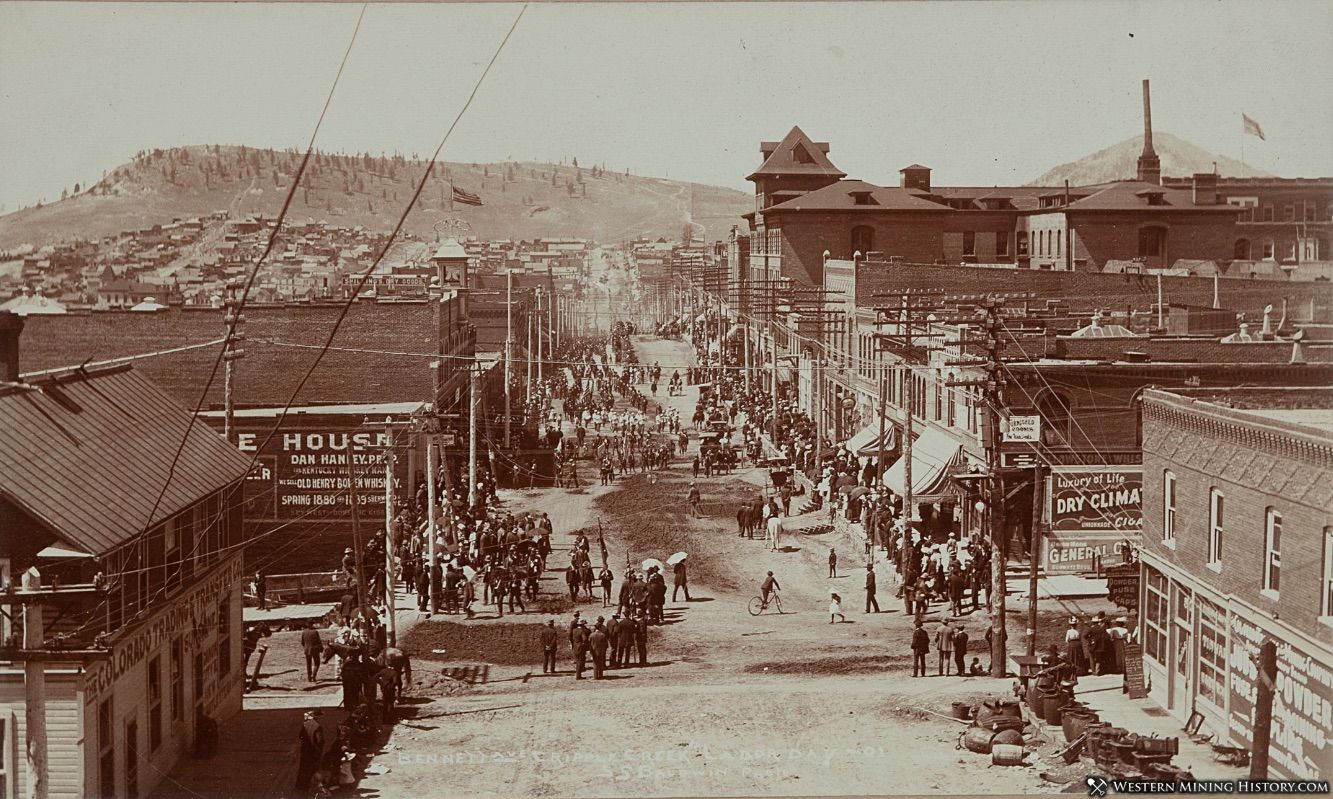
A few major mineral discoveries were made during the first decade of the 1900s. Some of these discoveries built important mining cities like at Goldfield mentioned above, and at Tonopah, Nevada. However, this decade signaled the end of major discoveries during the historic mining period that spanned from 1848 until the 1920s.
Future discoveries, like the extensive gold deposits of the Carlin Trend in Nevada, resulted in the establishment of rich mines, but not rich mining towns. Changes in mining technology and transportation reduced the need for labor, and the era of the western mining town came to a close.
While very many mining towns became ghost towns long ago, many have endured to this day. These towns often still contain numerous Victorian-era buildings and homes, mine buildings and headframes, and artifacts of the mining past.
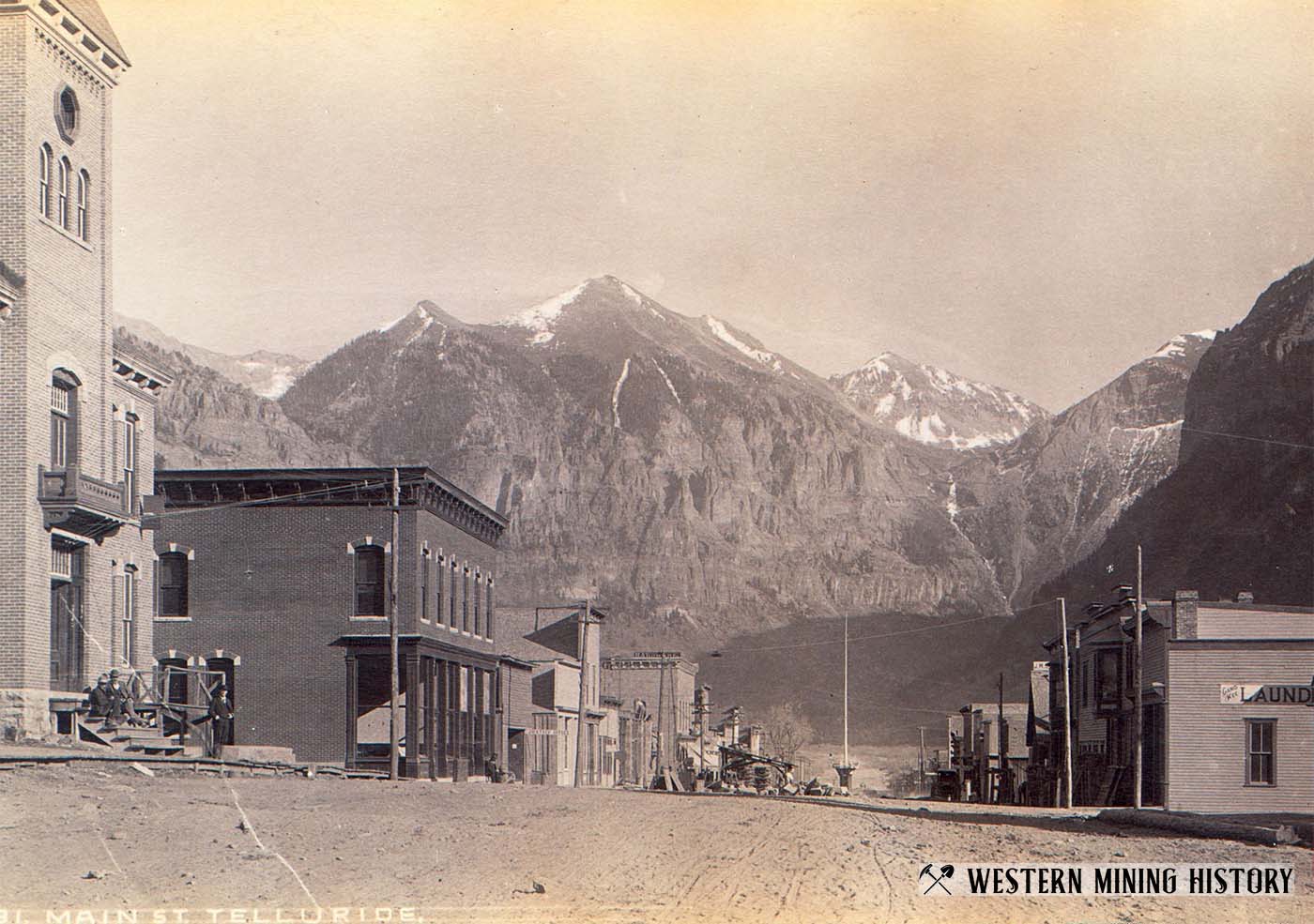
Some of these towns are situated in spectacular natural settings, and have reinvented themselves as world-class ski resort towns. Aspen, Telluride, Breckenridge, Park City and others are just as famous today as they were over a century ago, albeit for different reasons.
These mining towns are full of history from the amazing historic era of mining in the West and make great vacation destinations. Whether it’s on the backroads of Nevada, the ski slopes of Colorado, or the forbidding terrain of the Death Valley region, exploring historic mining towns is always an incredible adventure.
Related: The Top Ten Historic Mining Towns You Should Visit Today